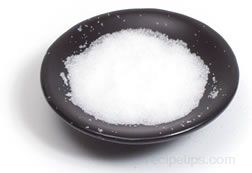Vinegar is used to add flavor and to assist with the perserving process. For vegetables and fruits that are white or light colored, use a white distilled vinegar so it does not discolor the food. Otherwise, cider vinegar can be used for other darker colored foods. In addition, a pickling salt (also known as canning salt) is required for the brine . Pickling salt is a very pure, fine-grained salt, which is produced without any additives such as iodine or anti-caking chemicals. Since traditional salts contain anti-caking chemicals they cause a cloudy effect in the brine solution and are not suggested for use when pickling.
To enhance the flavor of the pickled food, a pickling spice may also be added, which is a blend of spices that may typically include cloves, cinnamon, nutmeg, and peppercorns. In addition, ingredients such as allspice berries, bay leaves, ginger, mace, red pepper flakes, dill seeds, fennel seeds, and mustard seeds may also be added to the spice. Pickling spice can be purchased as a blended mixture of specific spices or made by adding individual spices with the amounts desired. Since pickling spices are most often simmered in a liquid base, the spice ingredients can remain whole, such as peppercorns, seeds and berries, and placed in a cheesecloth bag.










